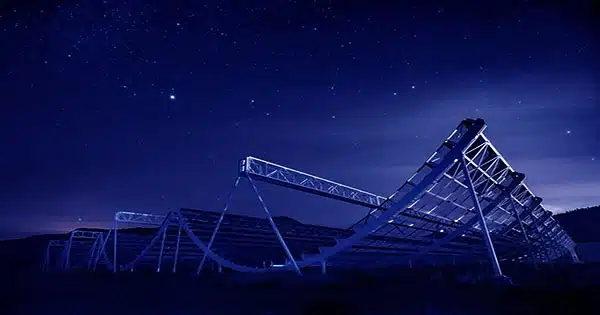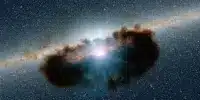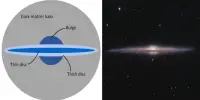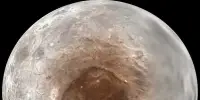Want to look at the stars but can’t because of light pollution? A group of astronomers from the Hong Kong University of Science and Technology has an answer. Instead of attempting to collect visible light, they propose capturing radio waves – and they’ve proposed a particularly fascinating method for doing so.
You may collect genuine astronomical data by monitoring the speed of neutral hydrogen prevalent across our Milky Way with a home-built rig consisting of cheap electronics and a simple cooking wok. If you’re lucky, you might even find signs of dark matter.
A document explaining the DIY radio telescope’s architecture and capabilities was just posted to the preprint site arXiv.org.
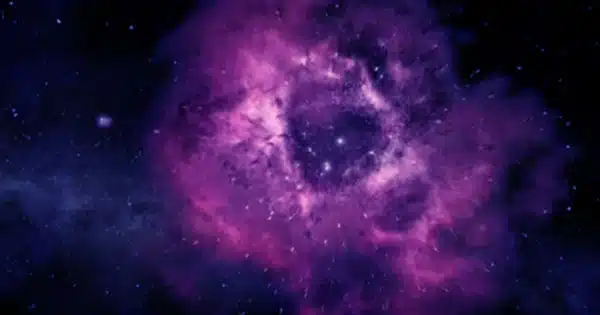
Explore the sky in radio waves: Radio telescopes, which were invented in the early twentieth century, have numerous advantages over ordinary optical telescopes. Radio telescopes, for example, require significantly less precision, are less sophisticated, and do not require expensive optics.
A good hobbyist telescope designed for observing visible light may cost around $1,000 dollars. Radio telescopes, on the other hand, are significantly less expensive because they are essentially just bits of metal bent into usable shapes.
Furthermore, good optical telescope observations necessitate clear, non-light-polluted skies located distant from towns. However, many people live in cities, making amateur astronomy the domain of the wealthy and mobile, accessible only to those with access to the darkest of skies.
Another advantage of radio telescopes is that, while humans emit a lot of radio emissions, those emissions are substantially different from the radio emissions produced by cosmic objects and processes. That example, human-caused radio noise is generally easy to filter out using simple digital processing techniques, whereas visible light pollution is not always the case.
A unique approach to backyard radio astronomy: The benefits listed above are the fundamental rationale for the Wok for Hydrogen (WTH) device designed by astronomers at Hong Kong University of Science and Technology, which is positioned in one of the world’s most densely populated cities. A standard kitchen wok serves as the main component of this do-it-yourself radio telescope.
While other teams have proposed at-home radio astronomy kits made from discarded satellite dishes, it turns out that works have just the proper curvature to target a certain frequency of radio waves, about 1,420 megahertz (MHz). This is also the frequency of radio waves emitted by neutral hydrogen atoms when their electrons switch spin orientation.
This so-called 21-cm line transmits a weak signal. However, because hydrogen is the most abundant element in the universe, a galaxy like the Milky Way contains a lot of neutral hydrogen. That means you can readily pick up the signal even in the most congested places, despite the abundance of radio noise.
Build your own radio telescope: The WTH radio telescope is simple to construct. Begin with a kitchen wok, which will act as the collecting dish. The copper wire is then bent in a specified configuration, as detailed in the paper. This copper wire serves as the receiving antenna, capturing radio waves.
The following two components, a signal amplifier, and a digital processor, must be outsourced. But you can readily purchase both online, and they shouldn’t cost more than $100.
That’s all there is to it. That is the entire telescope setup. The digital processor may be plugged into any computer and the output can be analyzed using free software. The equipment costs less than $150 in total, which is nearly an order of magnitude cheaper than the cost of a comparable optical telescope configuration.
Targeting neutral hydrogen with WTH: The WTH telescope (which was placed in a plastic tub with wheels for added mobility) was tested by the researchers at their institution, not far from Hong Kong’s urban core. They positioned the telescope at various parts of the sky and demonstrated their ability to detect neutral hydrogen emissions.
The signal they observed, however, was not at 1,420 MHz. It was instead moved to somewhat higher frequencies. The migration of the nearest spiral arm of the Milky Way toward us, the researchers explain, causes the radiation to blueshift to a higher frequency.
You can use your own WTH equipment to measure the migration of neutral hydrogen gas throughout the Milky Way by pointing the telescope in different directions at different times of the year, making it an ideal project for an astronomy enthusiast or club.
The researchers also point out that if you avoid light-polluted sky, you can attain even better results. With sufficient sensitivity, you can measure the migration of neutral hydrogen at various depths inside the Milky Way, which may then be used to create a 3D map of gas rotation throughout our galaxy.
However, keep in mind that the rotation speed should be faster than you would predict based on the combined gravity of all the normal, light-emitting matter in our galaxy. And, as it happens, that disparity is one of the crucial pieces of evidence for the existence of dark matter.
It’s amazing how much we can learn about the universe using the most basic of equipment, such as a plain kitchen wok.
